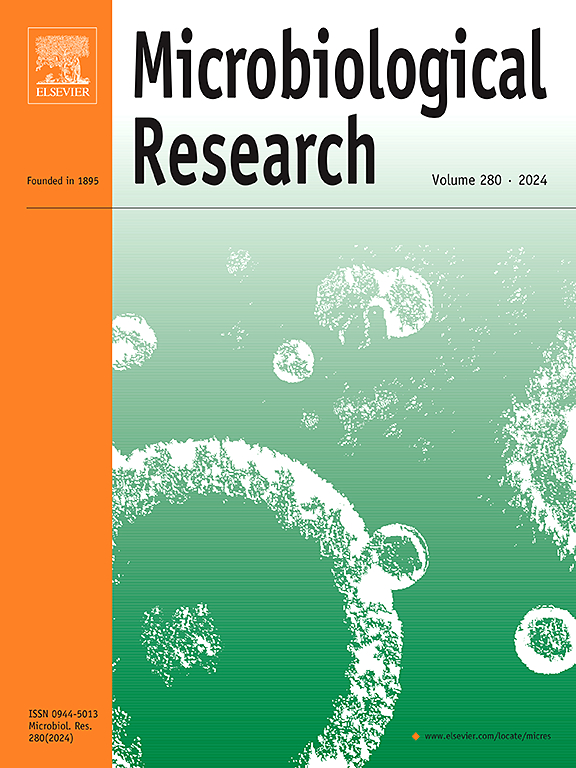Volatile organic compounds from Irpex lacteus inhibit pathogenic fungi and enhance plant resistance to Botrytis cinerea in tomato
IF 6.1
1区 生物学
Q1 MICROBIOLOGY
引用次数: 0
Abstract
Biocontrol fungi may exert antagonistic effects by emitting volatile organic compounds (VOCs), thus identifying fungal VOCs is crucial for understanding biocontrol mechanisms and developing novel biofungicides. In this study, we examined the antagonistic effect of Irpex lacteus LL210 against three major fungal pathogens: Botrytis cinerea (tomato gray mold), Fusarium oxysporum (cucumber wilt), and Alternaria alternata (pepper leaf spots) using in vitro assays. The results of both the dual-culture and dual-petri-dish methods showed that I. lacteus LL210 strongly inhibited the growth of B. cinerea, likely through the release of volatile compounds. SPME-GC-MS analysis of I. lacteus LL210 identified 770 volatile compounds, of which 26 key volatiles were screened on the basis of their relative odor activity values, peak areas and concentrations. Further evaluation using the dual-petri-dish method showed that compounds such as 2-Octen-1-ol, (E)-; Benzeneacetaldehyde; (E)-2-Octenal; Hexanal; (E)-2-Butenal; 5-Heptenal, 2,6-dimethyl-; 1-Octanol; 2,3-dihydro-Benzofuran; Diallyl Sulfur compounds exhibited significant inhibition of B. cinerea, suggesting their potential utility in the development of novel fungicides. We also tested their effects on plant growth and physiology and found that 1-octanol had minimal deleterious effects on tomato plants, as evidenced by growth and oxidative stress markers. This study systematically deciphered the VOCs profile of I. lacteus LL210, revealing critical mechanisms of pathogen inhibition through both direct inhibitory effects of VOCs and plant-mediated enhanced defense. These findings have driven the development of potential biocontrol agents based on VOCs, thereby providing sustainable solutions for crop disease management.
求助全文
约1分钟内获得全文
求助全文
来源期刊

Microbiological research
生物-微生物学
CiteScore
10.90
自引率
6.00%
发文量
249
审稿时长
29 days
期刊介绍:
Microbiological Research is devoted to publishing reports on prokaryotic and eukaryotic microorganisms such as yeasts, fungi, bacteria, archaea, and protozoa. Research on interactions between pathogenic microorganisms and their environment or hosts are also covered.
 求助内容:
求助内容: 应助结果提醒方式:
应助结果提醒方式:


